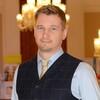Explore all the information on
Enzymes in poultry nutrition
Enzymes are proteins involved in all anabolic and catabolic pathways of digestion and metabolism. Digestive enzymes are categorised as endogenous or exogenous. Endogenous enzymes are produced by the animal and exogenous enzymes are administered from outside. Enzyme supplementation decreases nutrient loss through excreta, reduces diets nutritional levels, improves nutrient availability; thus, enhances production efficiency and profitability. In addition, exogenous enzymes hydrolyse non-starch polysaccharides, increase the usage of feed energy, reduce negative impacts of non-digestive residues on digesta viscosity, and improve gut microbial ecosystem. Cellulase, glucanase, pectinase, xylanase, galactisidases, phytase, non-starch polysaccharides degrading enzymes, amylase, lipase, cellulase, and protease are the most common enzymes used in poultry feed.
Giles Shih, Chairman and Chief Executive Officer at BioResource International Inc. talks about enzymes and probiotics and their relation to environmental sustainability...
Comments : 0
Recommendations: 0
Giles Shih, Chairman and Chief Executive Officer at BioResource International Inc. talks about the importance of sustainability...
Comments : 0
Recommendations: 0
BG-PRO is an intrinsically heat stable, multi-potent protease enzyme feed additive that optimizes the digestibility of proteins in poultry feed ingredients. It is a broad-spectrum protease having acid, neutral & alkaline protease activities that work on all protein sources....
Comments : 6
Recommendations: 4
I. INTRODUCTION Right now, there are two different models of production in the world and they are based on the income of the people. We have 7% of the population that lives on more than US$50 per day (Pew Research Centre, 2015) and the percentage of food expenses is a minimal part of their income. These rich countries are moving towards production where cages are banned and the birds need to be provided with space outside of the barn. However, 71% of the world population lives...
Comments : 1
Recommendations: 0
Sustainable solutions for hygienic feed production are increasingly important as the antibiotic-free/no antibiotics ever (ABF/NAE) trend becomes stronger and more widespread. Once only considered in the most mature and advanced markets, today ABF production is a regular discussion point in all regions and will eventually become a reality for smaller and developing markets. Evolution of the market – consumer and industry ABF production places ever-increasing pressure...
Comments : 0
Recommendations: 1
Guanidinoacetic acid (GAA) as a source of creatine. 1. Creatine is a naturally occurring component in the body of animals and is a critical component in energy metabolism. 2. In contrast to other nutrients, creatine is stored in the muscle and directly reloads ATP for energy supply to the muscle. This is particularly important during periods of high energy demand and prevents the formation of reactive oxygen substances which have a negative effect on performance. 3....
Comments : 5
Recommendations: 8
Water is important for the overall health and performance of birds, yet less focus has been on water compared to the other nutrients. Increase or decrease in water to feed intake ratio (WI:FI) indicates issues related to nutrition, health or management of the shed particularly in broilers due to their fast growth. An automated water measurement system was developed at the University of New England to measure water intake in broilers. This system was used to measure water intake in two...
Comments : 0
Recommendations: 0
1. Introduction The occurrence of ‘wet litter’ in meat chicken sheds is associated with concerns regarding animal welfare, flock health, food safety, environmental impacts and reductions in production efficiency. Mitigating wet litter will only be achieved when there is thorough understanding of the multidimensional causal factors. This will require a multidisciplinary approach to understand the hydrology in the meat chicken shed micro-environment; the biological...
Comments : 0
Recommendations: 1


Effective Solutions to Manage Poultry Heat Stress for Better Health and Farm Productivity
Suggested link
INTRODUCTION Least cost feed formulation relies on the assumption of additivity of digestible nutrients from the contributing ingredients. It is generally accepted that assessment of the nutritional value of individual raw materials underestimates their eventual contribution in a complex diet because of the often-substantial influence of endogenous loss. The premise is that a proportion of nutrients that leave the terminal ileum are inevitable (or “basal”) losses and...
Comments : 0
Recommendations: 2
Introduction The gradual increase in the world's poultry production concomitantly increases the need for ingredients to supply protein for diets. Cereals constitute about 60 - 70% of diets to meet the energy requirements of poultry, whereas oilseeds contribute to cover the dietary protein requirements of birds (Senkoylu & Dale, 1999). Soybean meal (SBM) is the main protein source in poultry rations given its high nutritional value. Most of the European and Asian...
Comments : 9
Recommendations: 2


Changing Feed Industry Imperatives Call For A Closer Look At On-Site Aflatoxin Test Methods
Suggested link
Systemic enzymes have long history in medicine and are widely used to combat various kinds of stress, inflammatory disorders & immunosuppression. Key ingredient in Immunotech is Serratiopeptidase which is a protein (proteolytic) enzyme isolated from the nonpathogenic enterobacteria Serratia E15 found in silkworms. ...
Comments : 3
Recommendations: 2
Background & Objectives Wheat has known as an alternative source of energy in poultry diets because of a shortage of corn supply and the increase in corn price. However, its utilization efficiency is lower than that of corn because it contains more anti-nutritive factors, especially non-starch polysaccharides (NSP). Some studies suggest that the addition of xylanase in wheat-based diets can reduce the intestinal viscosity by partially hydrolyzing the NSP of wheat, resulting...
Comments : 0
Recommendations: 0
The demand for alternative feed ingredients for animal diets keeps increasing. However, alternative feed ingredients could contain anti-nutritional factors. Arabinoxylan, high in wheat, forms the major constituents of the cell wall and encapsulates highly valuable nutrients in the wheat grain. Due to its viscous nature and high molecular weight, it hampers efficient nutrient absorption and digestion. Xylanase could be used to degrade the xylan bond and in turn, improve digestibility. The...
Comments : 0
Recommendations: 0
A quick glimpse at the most awaited event, Poultry India Exhibition 2022. Team ABTL would like to thank everyone who made it a memorable with everlasting experience.
Poultry India just concluded the 14th Edition at Hitex Exhibition Centre, Hyderabad. The Exhibition featured the most innovative and reputed companies across the continent from the poultry sector to showcase their businesses.
For team ABTL was an opportunity to meet its customers, stakeholders, and...
Comments : 0
Recommendations: 0
Research findings highlighting the efficacy of Xylanase, a NSPase marketed under the product name Xylamax by BioResource International (BRI), were shared at the Poultry Science Association (PSA) annual meeting held July 11-14 in San Antonio. The poster presentation detailed the improvement to body weight and gut health parameters that was achieved by supplementing with Xylamax during a study with 1,350 day-old mixed-sex Cobb 500 chicks grown to 42 days of age. The three feed treatments...
Comments : 0
Recommendations: 1
Supplementing broilers with EnzaPro, a feed additive formulated with a unique combination of direct fed microbials and xylanase, could decrease Salmonella colonization in birds, according to research shared at the Poultry Science Association (PSA) annual meeting held July 11-14 in San Antonio, Texas. EnzaPro is an enzyme additive marketed by BioResource International (BRI). The oral presentation detailed the research which analyzed the effect of 4 dietary treatments on Salmonella...
Comments : 0
Recommendations: 1
Many challenges are facing the broiler industry. Antibiotics have been used in animal feed to mitigate the negative effect from various sources; however, increased legislation restrictions and consumer demands are increasing pressure to limit antibiotics usage in the poultry production. The industry is continuing to investigate different approaches to protect chicken health while maintaining the feed cost load and improving desired growth efficiency. One way to do that is through...
Comments : 0
Recommendations: 0
Probiotics. Enzymes. Fiber. Gut Health. While these are all buzz words in human health, they are also topics that are increasingly being studied in the animal industry to aid performance and health of livestock raised to produce protein for human consumption. Moreover, as the poultry industry moves away from subtherapeutic antibiotic growth promoters (AGP) usage, multiple technologies have been explored to protect the health of birds from pathogens, while still maintaining low feed cost and...
Comments : 0
Recommendations: 0
...
Comments : 3
Recommendations: 1
The majority of pig and poultry diets are composed of about 70% maize or wheat, 20% soybean meal or other similar protein sources, and 10% micro-ingredients. Although this is a simplification, it illustrates the point that the majority of pork, poultry, and eggs are produced using a limited range of ingredients. In addition, it is important to note that feed cost is about 60-70% of overall production cost. And, as feedstuff prices continue to be prohibitively high, with detrimental...
Comments : 1
Recommendations: 3

.jpg&w=3840&q=75)







.jpg&w=3840&q=75)









.jpg&w=3840&q=75)










